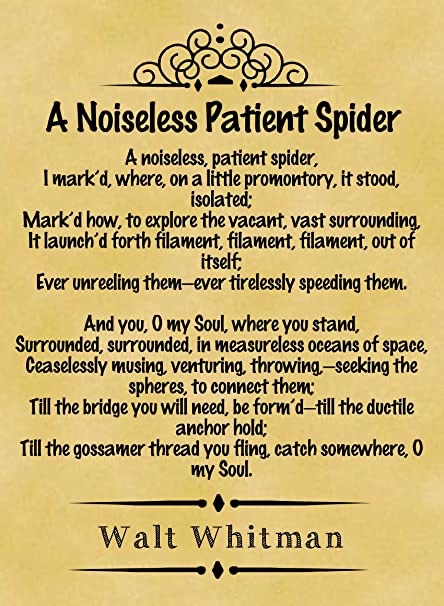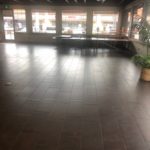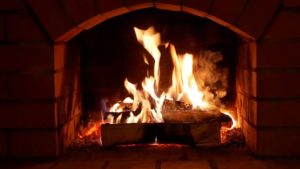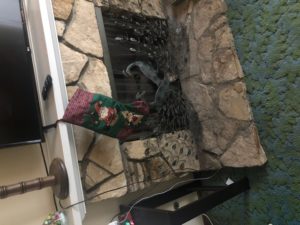Today marks the second Sunday that churches have not held in-person services. Some are holding online recorded or interactive services, but the fundamental routine of getting up, getting dressed, and joining with others for an hour before going out to breakfast (another tradition that might be even more missed) has been interrupted and is likely to be for quite some time. What will happen to this aspect of our culture when the doors are reopened? I know people will flood back into restaurants (many of us have a “first place I’ll go” list), bars, and coffee shops (movie theaters, I’m not so sure, but that’s another day), but will they come back to churches and what will these churches be?
First let me say that I’m discussing this as a trends analyst, using my understanding to attempt to project what will happen, not as an interested party. I’m not trying to make something happen or not happen, just trying to match facts, circumstance, and my read on human nature. Second, I’m not judging churches or people (well, actually one paragraph later on will be pretty judgy) nor am I going into matters of faith, rather I’m looking at this from a sociological point of view. Finally, I will be focusing on Catholic Churches primarily because I know more about them, and some of my conclusions may not hold true for other denominations. I would be interested in other perspectives.
Let’s start with context, I have been predicting a drastic reduction in numbers of people attending regular religious services for some time. Parish affiliation (except in some particular cases) is weak, and the regular attendance in many parishes has been declining and aging for some time. The traditional belief that it is a sin to miss Sunday mass no longer has much hold in the decisions of even practicing Catholics. Though some places boast continued strength in collections, analysis of giving patterns shows that collections are both shrinking and being increasingly supported by a smaller and smaller older demographic. As this older group passes on (and obviously this will be a factor in a virus that primarily targets older people) parishes will have significantly reduced income. The next generation has not developed the habits of giving (or attendance) that their parents had, therefore churches will be forced to reduce services, which can cause an accelerating spiral. All of these factors were in place prior to this crisis, but COVID-19, and the way we are reacting to it, will most likely act as an accelerant, and compress a ten year trend into an immediate reality.
I will leave it to others to analyze reasons for this decline. Obviously I have my thoughts, including a generation of news about scandal, hierarchical structure, closed minded allegiance to orthodoxy over persons, the disintegration of the Catholic School system, poor quality services and preaching, and cultural changes out of the control of any parish or diocese (one could argue that the decline of formal church might be as much because of club soccer as anything else). Needless to say, if many only go because they “have to” instead of “want to,” a disruption like this is a perfect antidote. Hmm, appears I didn’t completely leave it to others.
So if this has already been in motion, how will the virus, and more importantly the response to the virus, affect the next steps? In order to examine this we need to look at it from two separate but related perspectives, people and money.
People
As with most other things in this time, the length of the lockdown is critical to ultimate effects. I suspect that we will see the lockdown in three phases, the current absolute phase where church services and all gatherings are forbidden, moving to a transitional phase where things will be allowed but people will self-select which to attend, to a resumption of full public life after the greatest threat has passed. If this is true, church attendance will continue to be hit through phases one and two. The number of people who will choose to attend church at a potential risk to health will not be inconsequential, but it certainly won’t be business as usual, and as the elderly (those who have not succumbed to the virus) are the most vulnerable, this key demographic may be the last to return (I have to admit, I’m not sure about this, because older Catholics are much more tied to the obligation of Church, so this may balance out).
Beyond when, the question of will they come back is far from certain. As bored as many of us are in our homes, we are currently developing new ways of being. If church attendance could be seen by many as a “habit,” then several weeks of other activities can break the habit. What will happen when regular church attendance is replaced for a time with sleep in, coffee, croissants, and the New York Times crossword puzzle? So if resuming church attendance is a choice, then churches will have to win back the converted (WARNING: this is where I get judgy). Given the poor quality of services and preaching at most Catholic Churches, compared with the additional support and services provided by other Christian denominations, I believe it is unlikely that anything close to current (already declining) numbers will return. If what is currently offered is not holding them, it certainly will never win them.
NOTE: I am certain that some of my friends are saying, “But the Eucharist!” As I said at the beginning, this is a sociological, not a faith-based exploration. You could be right.
Money
I have always appreciated Don Ohlmeyers quote, “The answer to all your questions is money.” I quoted this regularly when I worked in the schools office and was regularly struck with how accurately it described every situation. Because the Church is fundamentally a business, and frankly it has the worst business model to endure this type of shutdown
Let’s start here with the public perception of the wealth of the Church. Honestly, I don’t know the facts here (I don’t know who does), but even if the assets of the Vatican were liquidated, I don’t know how long they could support the current structure. The reality is that the majority of parishes (with exceptions in wealthier communities) in Orange County, a tremendously wealthy part of a wealthy state, run barely above or in deficit (I get this not from any “inside knowledge” but from reading public financial reports). Falling collections have not been replaced by other revenues, and parishes have adopted a scarcity model of cutting rather than building. Over half the parishes in most dioceses operate much like a family living from paycheck to paycheck. Guess who has just missed two paychecks?
Likewise, most dioceses have few reserves to manage a major financial hit. The cash reserves in the past have been eaten up in settlements over past and current wrongs (just a fact), leaving many dioceses at or near bankruptcy prior to this current crisis. The key asset of the Church is property, but getting rid of property (especially in what will clearly be a depressed market for some time) isn’t easy and is only a one-time boost of cash that can’t bail out a essentially failing financial system. Many wealthy parishes share significantly with parishes in need, but this is not mandated by structure or Canon Law and will probably not be enough to weather the coming storm.
The effects of this unprecedented interruption in revenue, like the interruption in attendance, will be determined by the length of interruption. Most churches are offering “online Masses” with collections, and the revenue from these will be fascinating to follow. However, it is unlikely that attendance (or donations) will be large, and most certainly these will be least successful in the parishes most in financial need, whose congregations are often less likely to give online. Many parishes have for years supported direct deposit giving, which should work unless congregants shut it down, but again these numbers are small, and once again they favor wealthy parishes.
And looming before us in three weeks’ time is Easter. The Easter collection for most parishes is the second largest collection of the year and is used to help cover deficits of other weeks. While no decisions are clear for April yet, it is unlikely that we will be out of phase 2 of lockdown (self-selecting attendance) and we very well may still be in phase 1. The loss of five weeks of revenue including this bonanza will likely push most parishes (and dioceses) into default. Churches may be sold (or lost) and the scope of ministry will be greatly curtailed. People when they return are unlikely to have the ability or the inclination to make up this deficit as the impact of the crisis affects everyone’s income.
What Will Emerge
If we stick with the original premise that this crisis is an accelerant of existing trends and not a root cause, then some direction becomes clear. Though no one can say with certainty how anything will emerge from COVID-19, I see three trends feeding from it and (to quote a speaker I once heard) “I may be wrong, but I think I’m not.”
- The shrinking of the middle-class Church. This is already well documented as a trend that church attendance is a bifurcated curve of wealthy conservatives and poorer (often immigrant) devouts. Given that these two populations are most tied to the church, they are the most likely to return. Richer communities will be able to support churches despite smaller numbers, and smaller poorer communities will demand fewer services and simpler worship. NOTE: I understand that this is WILDLY reductive, and I apologize, but current statistics back this up, and I am talking about group trends, not any individuals.
- The continued movement to the right. Despite the well-publicized statements of Pope Francis, one need only look at decisions made in the church in America in the past year to see that the power structure is fully ensconced in the camp of the right. As the church looks to wealthy conservatives (wealthy liberals have already left, and most of the Church was happy to see them go). for bailout during this crisis, this group will continue to grow in power and voice.
- The flattening of the Church landscape. Though the Catholic Church will maintain much of its cache from its international infrastructure, dramatically shrinking numbers may put it more on par in numbers with other Christian and non-Christian denominations, and all of these will be dwarfed by the NONES, with no religious preference or participation.
This analysis is suggested without judgement. As I said at the beginning, I’m simply looking at things and reading them to what I see are likely conclusions. I don’t see any of this as good or bad, simply the outcomes of directions affected by prevailing conditions.










